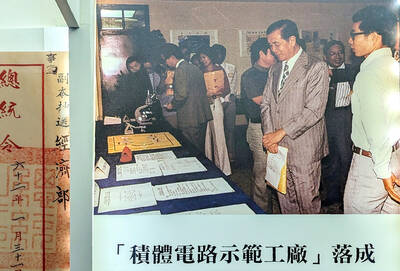There is a point made fairly early on in Taiwan, A Contested Democracy Under Threat by John Sullivan and Lev Nachman that strikes at the heart of both how Taiwanese understand themselves as a people, and how this work will be received inside and outside of Taiwan. It comes in the second chapter, where the authors consider the response of Taiwanese to the 228 Incident in 1947. The claim is made that the tragedy of that murderous act of suppression became a “catalyst for Taiwanese subjectivity and identity.” It marks one of very few moments in this excellent contribution to English-language literature on Taiwan where the authors stray from the consistent and high standard of accessibility they set throughout this introduction book.
What is “Taiwanese subjectivity”? My own attempt at describing this would be: a Taiwanese perspective, at first, of a unique identity defined by being born in and belonging to the specific area of Taiwan, Penghu and indigenous islands, and later, also of belonging to a modern sovereign entity in that area that self-governs as a single nation-state. If that seems vague, it is because the more we learn from this book about the development of Taiwan and the political precipice Taiwanese have come to find themselves on, the more you realize the wisdom of Taiwanese in knowing that flexibility of definition and interpretation is at times beneficial and at others an unavoidable consequence of ensuring survival.
We learn that definitions matter, and that they change over time. Definitions are imposed on Taiwan, and constrain it, while at the same time they are also used to project identity, and intent. Multiple contradictory definitions can exist at the same time in the same space.

An illustrative example would be how the authors explain the difference between the issues that dominate local and presidential elections. It is at presidential elections that Taiwanese are reminded of the existential precariousness of their security situation. Whoever wins will be expected to commander the ship through another four years of relations with the People’s Republic of China (PRC). At stake is a potential war. There can be no doubt now that the PRC’s intent is to prevent Taiwanese independently coming to a decision on “unification” at its own discretion and pace, let alone via democratic vote.
In January’s presidential election every Taiwanese voter will be asking themselves a form of the following two questions: Can the PRC be appeased and negotiated with in good faith? and Should Taiwan hold to its position of No confrontation, No denial of sovereignty and No constitutional change? No surprise then, for as long as direct presidential elections have taken place (this will be the 8th), the dominating issue in the election has been China. That in turn shapes the electoral discourse and outcomes into broadly two main choices.
Taiwan, A Contested Democracy Under Threat achieves something that some of the earlier attempts to sum up Taiwan for the lay reader have not. Both the inexperienced and the experienced Taiwan hand will find the structure logical and intuitive, and the information conveyed in a rapid yet still comfortably digestible form. Its true skill lies in condensing what can be known to what needs to be known. Re-reading my notes I can see most are basically asking “a bit more on this please,” but by the end I have the impression that each point has a carefully decided degree of extrapolation. This is not a case of too much brevity or fill the gaps yourself. If you are looking for a book that will condense the political situation of Taiwan with a huge amount of relevant, up to date detail into 176 pages without needing to use a microscope, a dictionary, and eyes drops, this is it.
The work achieves this by delivering a series of compact insights in each chapter that the reader can then choose to unpack, revealing the extra layers. For example, when Sullivan and Nachman state that the preference structures of the Taiwan, the PRC and the USA make a balancing act very difficult one, it might not feel like an especially profound observation. It’s when you consider that concise statement in light of its implications for Taiwan that you get a picture of Taiwan as a spinning top on a tightrope which looks to be maintaining centrifuge from a distance. The closer you get the more you see wobbles and constant corrections to compensate.
A proficient job is also done of presenting potentially confusing concepts with a consistent and accessible level of clarity: “status quo,” “strategic ambiguity,” “strategic clarity,” “One China Principle” and “One China Policy” are all delineated in a manner as to leave as little confusion as possible. This is welcome and long overdue. Having an evidenced-based handle on terms like these allows people to then critically parse others who might use them in mass media with less discipline. This is a book that systematically equips readers to start understanding Taiwan’s politics.
There are some elements missing and some points of disagreement. There’s no explicit reference to Beijing’s “united front” but there is a discussion of it. The strategic relevance of the US treaty relationship with the Philippines in PRC calculations could have been explored a bit more, as Japan’s is. Ultimately though these are quibbles, and good writing always leaves something that needs to be discussed further. While the authors’ own subjectivity comes through as a very sotto voce appeal to a basic human empathy with Taiwanese perspectives, it is also a book that is explicitly inclusive of different interpretations and possibilities. It is an even-handed examination of the agency of all sides who have declared themselves invested in Taiwan’s status past, present and future. As such it is both a work that comes from a place of affection for Taiwan and one which demonstrates respect and recognition of the true complexity of this contested nation.

Oct. 27 to Nov. 2 Over a breakfast of soymilk and fried dough costing less than NT$400, seven officials and engineers agreed on a NT$400 million plan — unaware that it would mark the beginning of Taiwan’s semiconductor empire. It was a cold February morning in 1974. Gathered at the unassuming shop were Economics minister Sun Yun-hsuan (孫運璿), director-general of Transportation and Communications Kao Yu-shu (高玉樹), Industrial Technology Research Institute (ITRI) president Wang Chao-chen (王兆振), Telecommunications Laboratories director Kang Pao-huang (康寶煌), Executive Yuan secretary-general Fei Hua (費驊), director-general of Telecommunications Fang Hsien-chi (方賢齊) and Radio Corporation of America (RCA) Laboratories director Pan
The consensus on the Chinese Nationalist Party (KMT) chair race is that Cheng Li-wun (鄭麗文) ran a populist, ideological back-to-basics campaign and soundly defeated former Taipei mayor Hau Lung-bin (郝龍斌), the candidate backed by the big institutional players. Cheng tapped into a wave of popular enthusiasm within the KMT, while the institutional players’ get-out-the-vote abilities fell flat, suggesting their power has weakened significantly. Yet, a closer look at the race paints a more complicated picture, raising questions about some analysts’ conclusions, including my own. TURNOUT Here is a surprising statistic: Turnout was 130,678, or 39.46 percent of the 331,145 eligible party

The classic warmth of a good old-fashioned izakaya beckons you in, all cozy nooks and dark wood finishes, as tables order a third round and waiters sling tapas-sized bites and assorted — sometimes unidentifiable — skewered meats. But there’s a romantic hush about this Ximending (西門町) hotspot, with cocktails savored, plating elegant and never rushed and daters and diners lit by candlelight and chandelier. Each chair is mismatched and the assorted tables appear to be the fanciest picks from a nearby flea market. A naked sewing mannequin stands in a dimly lit corner, adorned with antique mirrors and draped foliage

The election of Cheng Li-wun (鄭麗文) as chair of the Chinese Nationalist Party (KMT) marked a triumphant return of pride in the “Chinese” in the party name. Cheng wants Taiwanese to be proud to call themselves Chinese again. The unambiguous winner was a return to the KMT ideology that formed in the early 2000s under then chairman Lien Chan (連戰) and president Ma Ying-jeou (馬英九) put into practice as far as he could, until ultimately thwarted by hundreds of thousands of protestors thronging the streets in what became known as the Sunflower movement in 2014. Cheng is an unambiguous Chinese ethnonationalist,